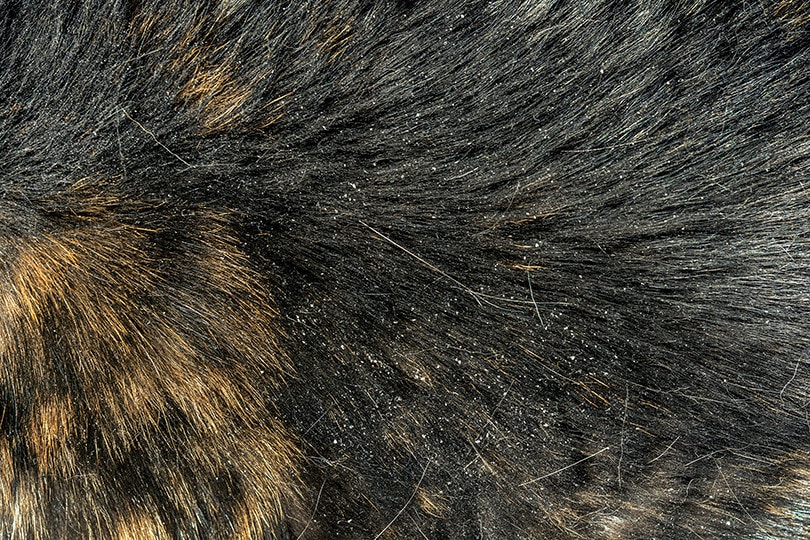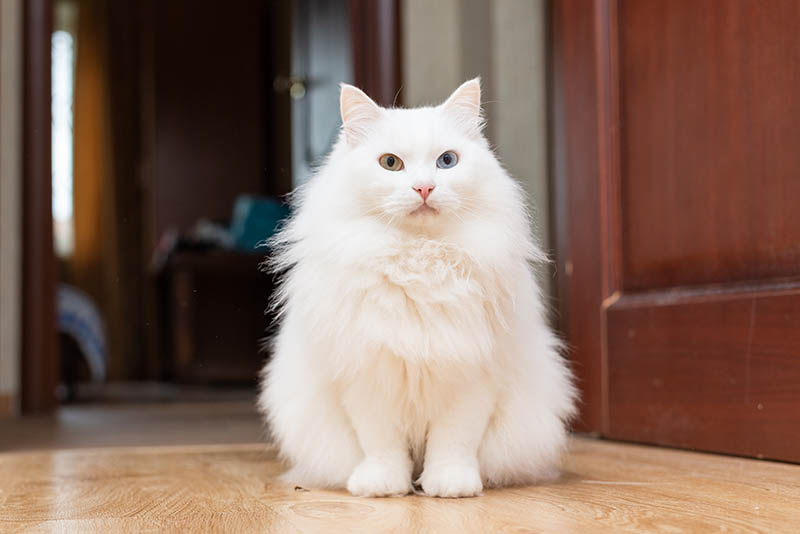VET APPROVED

The information is current and up-to-date in accordance with the latest veterinarian research.
Learn more »Click to Skip Ahead
Are you allergic to pets? Living with pet allergies can be a great misfortune, especially if you already have several furry friends living with you.
Pet allergies can range from a minor annoyance to severe discomfort. The cat dander, saliva, and skin cells from only a single cat can trigger irritating reactions.
However, there are ways to reduce and manage your symptoms, as well as treatments that may help, so please speak to your doctor or dermatologist. Learn how to get rid of some of the cat dander and go back to fully enjoying the company of your favorite feline friends. Furthermore, reducing cat dander in your home will make your house more friendly to guests and comfortable for anyone suffering from allergies.

What Is Cat Dander?
Cat dander refers to the tiny pieces of dead cat skin that have been shed and may become airborne, getting to curtains, beddings, carpets, and other surfaces, such as clothing and human skin. It’s believed to be the second most common airway irritant and source of inhalant allergens after house dust mites. These dead skin particles from the cat contain the primary allergen known as Fel d 1.1
Fel d 1 is a glycoprotein found in a cat’s saliva, anal glands, skin, fur and sebaceous glands under the skin, which are their biggest producer. Male cats that haven’t been neutered seem to produce more allergens than neutered cats. Therefore, cat dander can be a problem for sensitive people, as the Fel d 1 might cause an asthmatic or an allergic response.

The 9 Ways to Reduce Cat Dander
Here is a comprehensive walk-through of nine practical ways of removing cat dander.
1. Bathe Your Cat
When cleaning your home, it is easy to overlook keeping your cat clean. However, this is one of the perfect ways to manage pet dander.
Even if your cat doesn’t love bathing, it’s something you can gradually get them used to using positive reinforcement, and it may be essential to manage allergies and keep everyone in your house comfortable. A weekly or less frequent bath can greatly reduce the dander in your cat’s fur, so make it a habit to keep your feline companion clean. It would be best if someone from the household who isn’t suffering from allergies takes over this task. Remember to also keep up with regular hand hygiene, washing your hands thoroughly after handling your kitty.
Speak to your vet if your cat has any specific skin or health issues that may make bathing contraindicated.
It's easy to get overwhelmed when you're looking for the perfect pet shampoo. The Hepper Pet Shampoo products are a great place to start because of their all-natural, pet-safe formula that is pH balanced for your pet's skin. Made with soothing ingredients like oatmeal and aloe vera, these shampoos are also free of phthalates, sulfates, dyes, and soaps. Both options will leave your pet clean, moisturized, and smelling like a day at the spa! Here’s a quick guide to help you choose the right option for your pet’s next bath!
Image
Product
Details
For Bathing
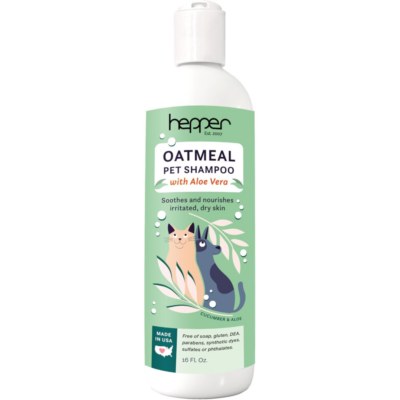
Hepper Oatmeal Pet Shampoo
Check Price
For In-Between Baths
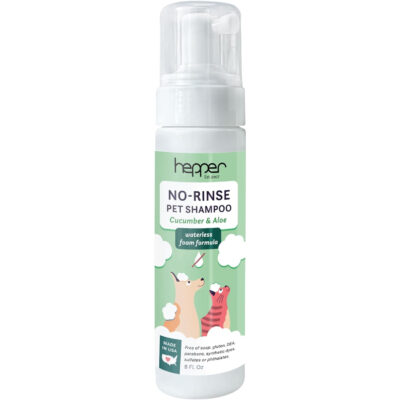
Hepper No-Rinse Pet Shampoo
Check Price
At PangoVet, we've admired Hepper for many years, and decided to take a controlling ownership interest so that we could benefit from the outstanding designs of this cool cat company!
2. Keep Your House Clean
Cat dander can latch onto any surface, such as curtains, carpeting, or countertops. Once the dander has settled, it becomes fairly widespread and more challenging to remove. Luckily, you can take steps to reduce it.
For strong surfaces, such as walls, tables, and baseboards, use a soft cloth and natural cleaning products to clean routinely.
Getting rid of dander from a soft surface can be a challenge. However, you can easily remove it with a lint roller or by vacuuming. Roll the gluey side over your clothing or curtains to trap the dander without causing discoloration or damage, and vacuum the home, especially carpets, nooks, and crannies, regularly using a vacuum with HEPA filters at least once per week. Again, it would be best if a person who isn’t suffering from allergies performs this task instead.
Another option is to shampoo your upholstery. Carpet fiber tends to catch pet dander, and every time you walk across the floor, the particles may get wound up in the air.
If you're trying to find an enzyme cleaner that does it all, we highly recommend our favorite cleaner, the Hepper Advanced Bio-Enzyme Pet Stain & Odor Eliminator Spray. It permanently removes the very worst stains and smells you can imagine and makes clean up a breeze. There's even a 100% satisfaction guarantee! Click here to order a bottle today. At PangoVet, we’ve admired Hepper for many years, and decided to take a controlling ownership interest so that we could benefit from the outstanding products of this cool cat company!
Rating
Image
Product
Details

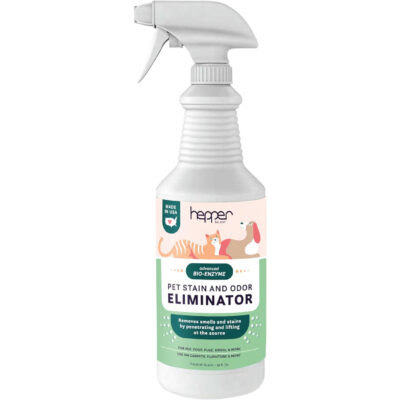
Hepper Advanced Bio-Enzyme Pet Stain & Odor Eliminator Spray
CHECK PRICE
3. Keep Your Cat’s Skin and Coat Healthy
Feeding a balanced and complete high-quality diet keeps your pet happy and healthy and often helps in reducing the amount of dander shed. Good nutrition in cats ensures healthy skin and overall health. Regular grooming also minimizes excessive shedding, particularly in long-haired breeds.
Neutering your cats, particularly males, has been shown to reduce the amount of released allergens. Talk to your vet to learn how best to care for your cat for healthy skin and fewer sheds.
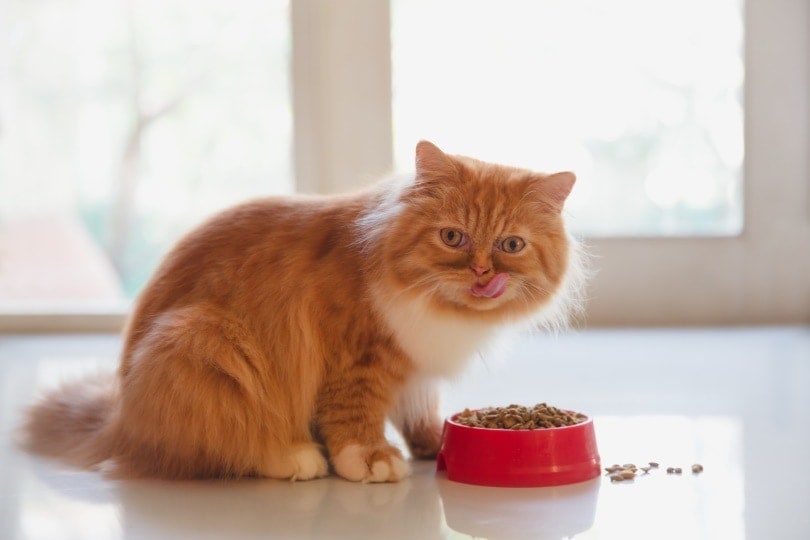
4. Keep Your Cat Parasite-Free
Mites, ticks, and fleas are common parasites on pets, especially cats. These parasites can make life for your pets irritating.
They not only cause itching but it can also negatively affect the skin health of your pets. Mites, for instance, make your cat shake their head while scratching at the ears. Furthermore, if your cat has fleas, they will scratch excessively. The pet might also lick or chew their skin, causing hair loss and skin damage. All this scratching can lead to the accumulation of cat dander in your home as well as discomfort for your cat.
So, when you notice any skin chewing, licking, or scratching with your cat, get a vet and have them diagnose the problem. A parasite-free cat licks and scratches significantly less than a parasite-infected pet, and has a healthier skin and coat. And that would mean fewer dead skin cells in your house.
5. Keep Your Air Ducts Clean
Your air ducts contain loads of dust and other debris. However, that is just what your eyes can see.
There are heaps of microscopic air contaminants there, and that should concern you. That is because when you turn on your heater or air conditioner, they often blow these particles back out into your house.
Your HVAC unit is a great component when it comes to trapping allergen triggers. And to make it an effective whole-house air filtration system, you need to fit it with superior air filters. In addition, it is essential to schedule a professional duct cleaning service afterward every 1 to 2 years.

6. Reduce Your Exposure to Cat Dander
Sometimes it can be okay to have your furry friend in your bedroom. But if you are allergic to cat dander, it is perhaps not a good idea.
However, that doesn’t mean you should get rid of your cat. The idea is you need to reduce the amount of time your pet spends in your bedroom. If you want nights free of wheezing and coughing, then stop letting cats in your sleeping room.
7. Brush Your Cat Regularly
Routinely brushing your cat can help spread natural oils throughout their skin and coat, preventing mats and keeping your cat’s skin and coat healthy.
In addition, brushing your cat routinely can help eliminate the dead fur from their coat and flakes of dead cells that make up dander. It also helps facilitate blood flow and helps you pick up any skin issues or lumps early on, as well as strengthens the bond between you and your cat. Removing the dead hair through grooming minimizes the amount of dander your cat sheds on the floor. Use gloves or even a dust mask while doing this, or have another family member who doesn’t suffer from allergies, groom your cat.
Tired of cat hair sticking to all of your clothes and furniture?
Well, we've got a little secret to share, want to know how we keep shedding to a minimum? The Hepper Cat Brush! Created to be gentle on your cat’s skin while removing excess hair, this brush is perfect for weekly grooming sessions and helping you to put down the lint roller.
At PangoVet, we’ve admired Hepper for many years and decided to take a controlling ownership interest so that we could benefit from the outstanding designs of this cool cat company!
8. Clean the Litter Box Every Day
Your cat’s litter box can be a rich source of allergens. Therefore, be more vigilant when cleaning it out. If possible, keep your pet’s litter box in an area of the house that you don’t frequent as much, such as a basement or garage, but also make sure it’s easily accessible for your cat, as otherwise they may choose to do their business elsewhere. Clean it regularly on a daily basis, not only to help reduce the presence of allergens from the urine and feces, but also to make your home more hygienic. Your cat will appreciate it as well.
So, how do you clean a litter box? To clean a litter box, scoop out all the litter and rub it with baking soda or regular soap, and then rinse it with warm water. But make sure to get rid of any remaining soap residue thoroughly.
Having a cat means dealing with occasional bad smells and messes. You can make that job easier with a great litter additive like Hepper's Advanced Bio-Enzyme Cat Litter Deodorizer, a natural product that uses bio-enzymes to eliminate odors.
We love this deodorizer because it's effective on all kinds of litter and is safe for cats of all ages. Plus, it's fragrance-free and biodegradable! At PangoVet, we've admired Hepper for many years, and decided to take a controlling ownership interest so that we could benefit from the outstanding designs of this cool company!
9. Do Laundry
One of the effective ways to get rid of allergens is by doing the laundry regularly at a high temperature.
Pet dander can stick to everything. So, regularly washing pet beds, blankets, curtains, and couch pillows can remove the cat dander trapped in the fabric.
To eliminate most of the particles, make sure to clean these items using high-temperature laundry machine programs routinely every month to get rid of as much dander as possible. It is also crucial to note that some dander might remain in your laundry machine, so it is advisable to run an empty cycle between several loads to help get rid of it.
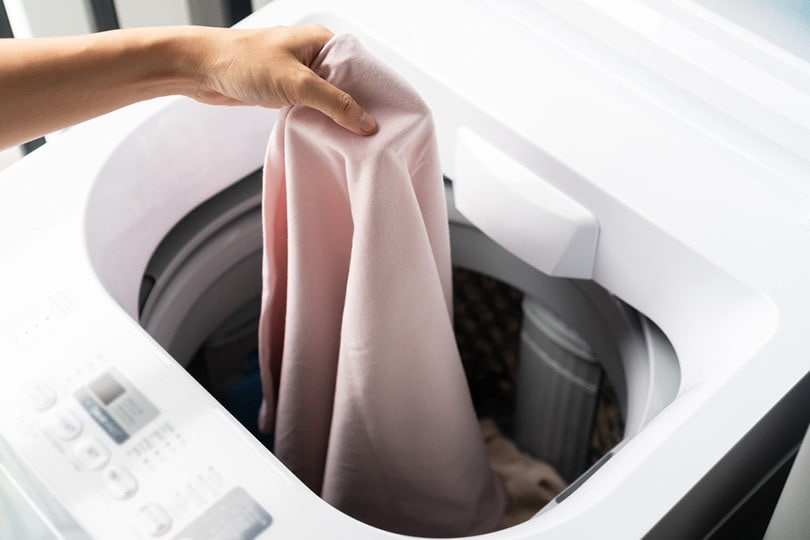

Final Thoughts
If you have pet allergies, speak to your doctor about ways to manage and control the symptoms. Consult a veterinarian as well about the best ways of caring for your cat, as your allergies might impact them, too.
Perhaps, you want to limit contact with them or keep them separate in small areas of your house to keep your or your family’s allergies at bay. However, you may not be able to offer them the attention and conducive environment they require and deserve when you do this. Luckily, these tips can help to prevent this in most cases.
- Related Read: Types of Cat Food: How to Choose the Best for Your Cat
Featured Image Credit: Nau Nau, Shutterstock
